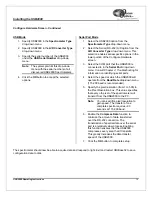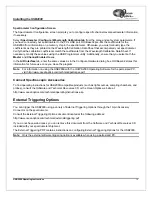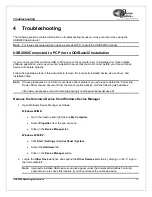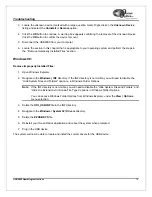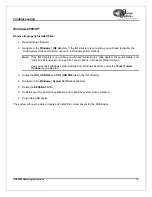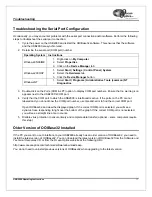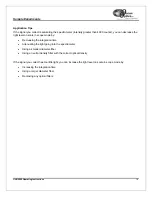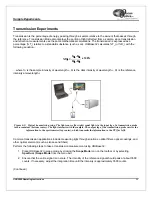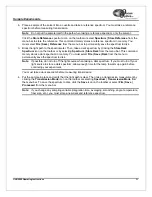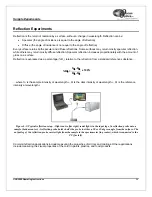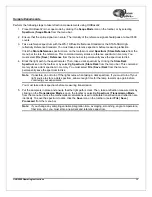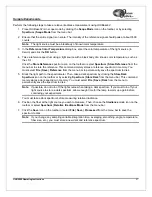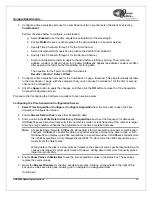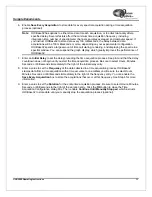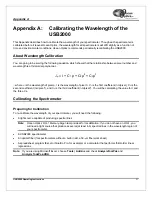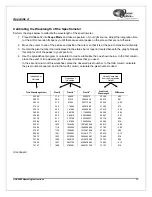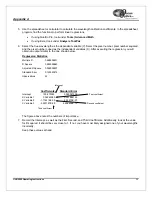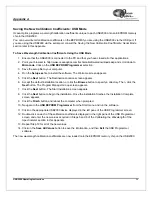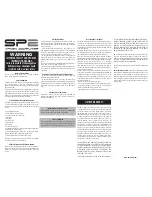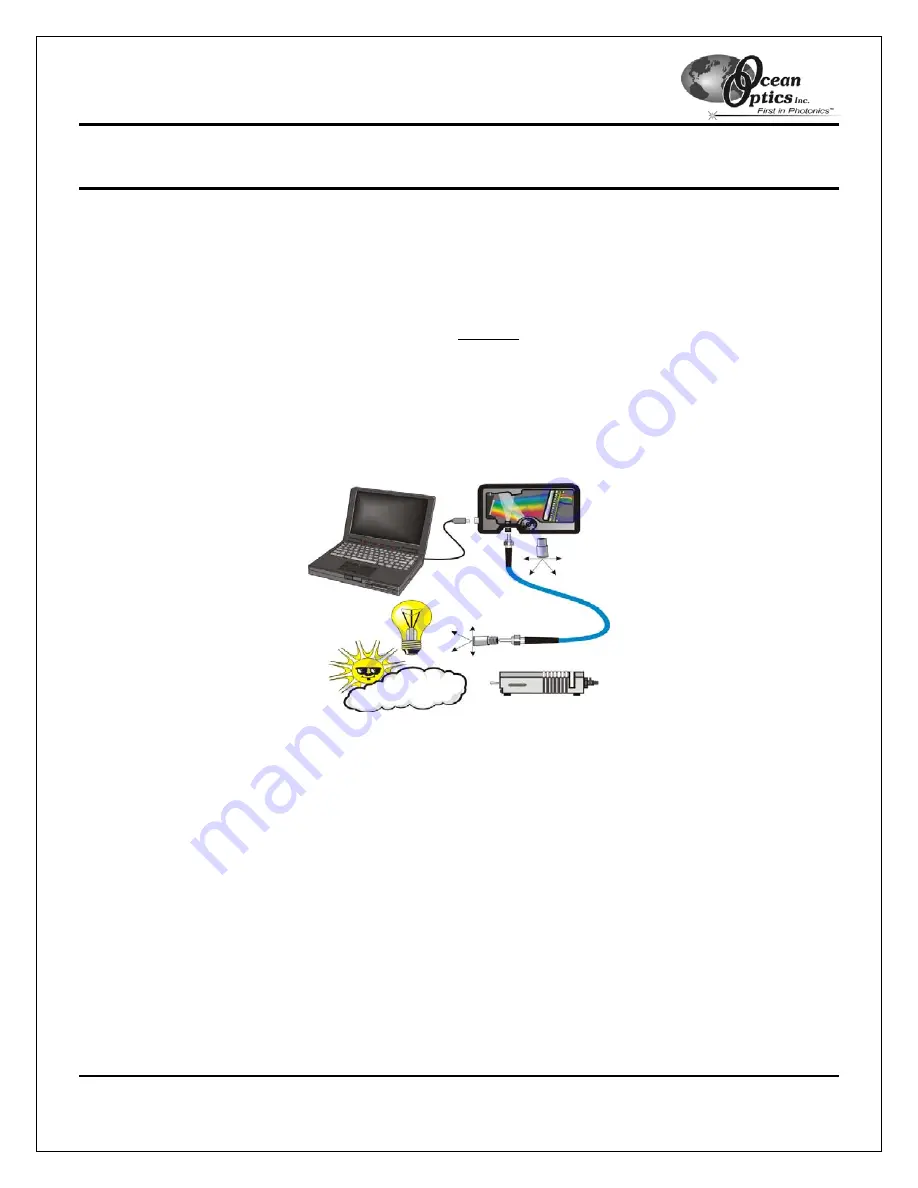
Sample Experiments
USB2000 Operating Instructions
26
Relative Irradiance Experiments
Irradiance is the amount of energy at each wavelength emitted from a radiant sample. In relative terms, it is a
comparison of the fraction of energy the sample emits and the energy the sampling system collects from a lamp
with a blackbody energy distribution (normalized to 1 at the energy maximum). OOIBase32 calculates relative
irradiance with the following equation…
S
λ
- D
λ
I
λ
= B
λ
(
R
λ
- D
λ
)
…where
B
λ
is the relative energy of the reference (calculated from the color temperature) at wavelength
λ
,
S
λ
is
the sample intensity at wavelength
λ
,
D
λ
is the dark intensity at wavelength
λ
,
R
λ
is the reference intensity at
wavelength
λ
.
Figure 6-4: Typical Relative Irradiance Setup. A light source with a known color temperature (such as the LS-1or
LS-1-LL - lower right) is used to take a reference spectrum. The light to measure (lower left) is accumulated through a
CC-3 Cosine Corrector (or FOIS integrating sphere) into an input fiber, which carries the light information to the
spectrometer. The spectrometer then transmits the information to the PC, which compares the measured spectra against
the reference spectrum, thus removing wavelength-dependent instrument response from the measurement.
Common applications include characterizing the light output of LEDs, incandescent lamps, and other radiant
energy sources such as sunlight. Relative irradiance measurements also include fluorescence measurements,
which measure the energy given off by materials that have been excited by light at shorter wavelengths.
Summary of Contents for USB2000
Page 2: ......

